The Fairies of Scotland: Legends, Lore, and Lasting Magic
Scotland is a land steeped in mystery. From mist-covered mountains and lochs that stretch into the horizon to ancient castles and moss-carpeted glens, it is a country where folklore runs deep. Among the most enchanting stories told through the centuries are those of the Scottish fairies—mischievous, powerful, and sometimes perilous beings said to dwell just beyond our sight. For lovers of fairy gardens and all things magical, Scotland’s fairy traditions offer a rich source of inspiration, blending history, myth, and imagination.
In this blog, we’ll explore the legends of Scotland’s fairies, their homes and habits, and how their influence continues to enchant modern life.
Fairy Origins in Scottish Lore
The word “fairy” in Scottish tradition doesn’t always refer to the tiny winged beings we often picture today. In fact, the Scottish fairies, or the Sìth (from the Gaelic word for “peace” or “supernatural”), were considered otherworldly spirits. Some were benevolent, blessing homes, crops, and children. Others, however, could be mischievous or dangerous if disrespected.
Stories of the Seelie Court and the Unseelie Court became central to Scottish fairy lore. The Seelie Court was seen as the more benevolent group of fairies, sometimes offering help to humans who treated them kindly. The Unseelie Court, by contrast, was known for mischief, trickery, and even abduction. These opposing courts highlight the dual nature of fairies in Scottish belief—both enchanting and unpredictable.
Homes of the Scottish Fairies
Scotland’s landscape is believed to be alive with fairy dwellings. From the Highlands to the Lowlands, many natural features are associated with the supernatural.
- Fairy Hills (Sìthean): Grassy knolls and mounds were thought to be entrances to fairy kingdoms. Disturbing these hills—by building, ploughing, or cutting into them—was believed to invite bad luck. To capture this idea, you can add a miniature fairy door nestled at the base of a mossy mound in your garden.
- Fairy Pools of Skye: The Isle of Skye is famous for its shimmering turquoise pools fed by waterfalls. Many visitors believe these waters were once enchanted by fairies who blessed them with beauty and magic. A small mirror or dish of water in your display, paired with a pixie girl by a gazebo, can recreate this Scottish magic.
- Fairy Bridges and Stones: Across Scotland, unusual rock formations, ancient standing stones, and moss-covered bridges have long been linked to fairies. Adding a miniature stone bench or lamppost can echo the look of these mystical places.
Fairy Festivals and Seasonal Magic
Fairy lore was deeply connected to the turning of the seasons. The ancient Celtic calendar, celebrated in Scotland, marked times when the veil between worlds was thinnest.
- Beltane (1st May): A festival of fire and fertility, Beltane was a time when fairies were especially active. People decorated their homes with flowers, believing the blooms invited blessings while keeping away mischief. Try adding colourful mini flower houses to your garden to capture this spring spirit.
- Samhain (31st October): Known today as Halloween, Samhain was believed to be when the Unseelie Court roamed most freely. Offerings of food were left outside homes to appease the fairies and protect against tricks. In your garden, you can add mini pumpkins and a witch set with broom, cauldron, and potion jars to celebrate the season.
Famous Fairy Legends of Scotland
The Fairy Flag of Dunvegan
One of Scotland’s most famous fairy relics is the Fairy Flag kept at Dunvegan Castle on the Isle of Skye. According to legend, this silk flag was a gift from the fairies to Clan MacLeod. When unfurled in times of need, it was said to bring victory, protection, and prosperity. Though worn and fragile today, the Fairy Flag remains a cherished heirloom and a powerful reminder of Scotland’s fairy past.
The Fairy Boy of Leith
A tale from the 1600s tells of a boy from Leith who could vanish for days at a time. He claimed he spent this time playing the drum for the fairies. When he grew older, he disappeared altogether, believed to have been taken permanently into the fairy realm.
The Brownies
Scottish folklore also tells of Brownies, small household fairies who helped with chores at night in exchange for food offerings—usually a bowl of milk or cream. However, if insulted or given clothing (a symbol of freedom), Brownies would vanish forever. These friendly spirits remind us of the helpful side of fairy magic. You can honour them in your garden with miniature animals like owls or hedgehogs, perfect companions for these gentle helpers.
Fairy Superstitions and Protections
While many tales describe fairies as enchanting, the Scots also took great care to protect themselves from fairy mischief. Some common practices included:
- Iron as Protection: Iron was believed to repel fairies. Horseshoes nailed above doors, or iron scissors hung in nurseries, were common protections. In your fairy world, a tiny fairy garden gate can echo this tradition.
- Rowan Trees: Planting rowan trees near homes was thought to guard against fairy interference.
- Milk and Bread Offerings: Leaving small gifts of milk, bread, or butter outside was believed to win favour from the fairies. Add a mini picnic set for a playful nod to this tradition.
The Lasting Influence of Scottish Fairies
Fairies remain part of Scotland’s cultural identity. Tourists flock to fairy-linked locations, artists paint fairy scenes against Highland backdrops, and storytellers keep these legends alive at festivals and gatherings. For many, the fairy tales of Scotland embody the magic and mystery of the land itself.
For fairy garden lovers, Scottish fairy lore offers endless inspiration. You might create a miniature Seelie Court glen filled with flowers, benches, and soft lighting, or a darker Unseelie Court corner with toadstools, cauldrons, and flickering lanterns. Seasonal decorations can bring Beltane or Samhain into your displays, while small tokens like witches’ potions, fairy doors, or toadstool houses tie into Scottish myth.
Building a Scottish Fairy Garden at Home
If you’d like to bring a touch of Scotland’s fairy magic into your home or garden, here are a few ideas:
- Fairy Hills: Create a mossy mound in your display, topped with a fairy door to represent a hidden entrance.
- Fairy Pools: Use a small mirror or glass dish to mimic water, surrounding it with stones and tiny fairies with net wings for a Skye-inspired scene.
- Seasonal Themes: Add Halloween pumpkins, cauldrons, and witches, or spring flowers and pixies.
- Fairy Companions: Include owls, hedgehogs, or squirrels alongside your fairies.
- Scottish Touches: A stone-effect fairy house can add a Highland castle feel.
Conclusion
The fairies of Scotland are more than just charming stories—they are a vital part of the country’s folklore, connecting people to the land, the seasons, and the mysteries of the unseen world. Whether you are inspired by the protective Brownies, the mischievous Unseelie Court, or the beauty of Skye’s Fairy Pools, these tales bring a timeless magic to life.
By weaving elements of Scottish fairy lore into your fairy gardens, you not only create enchanting miniature worlds but also celebrate a heritage of storytelling that has enchanted hearts for centuries.
So the next time you place a fairy door beneath a tree, add a pumpkin to a Halloween set, or arrange a mossy mound in your display, remember: you are continuing a tradition as old as the Scottish hills themselves—inviting a little of the otherworld into your world.


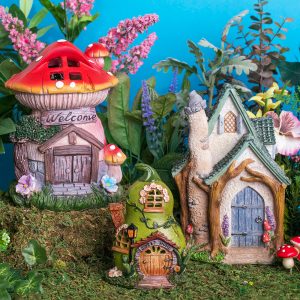
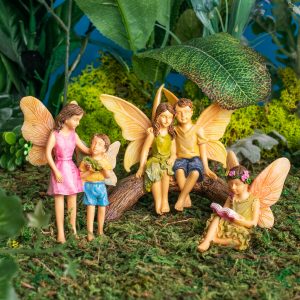
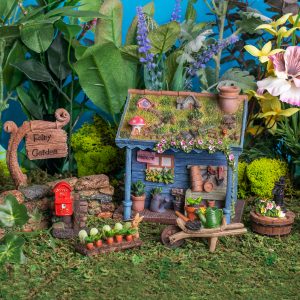
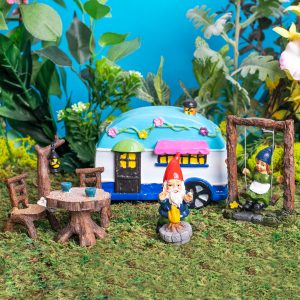
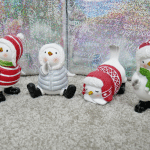
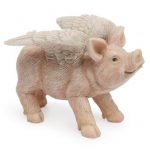
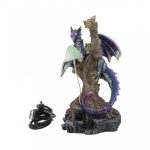
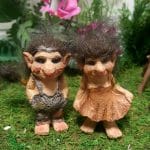
0 Comments